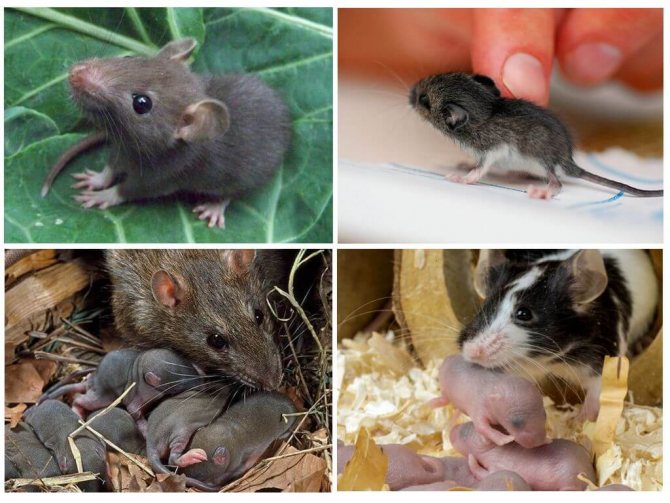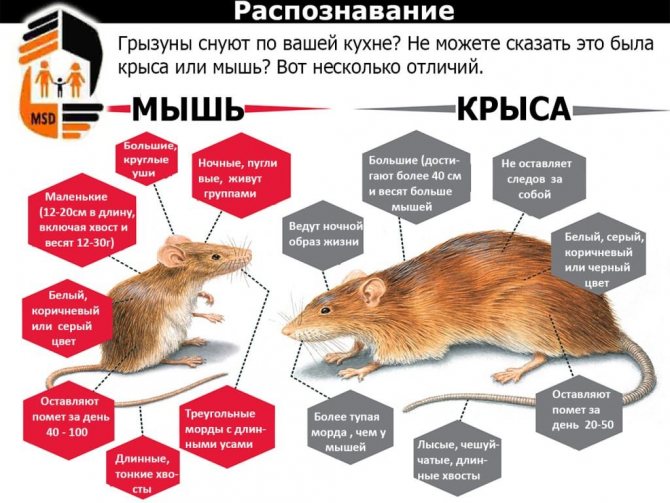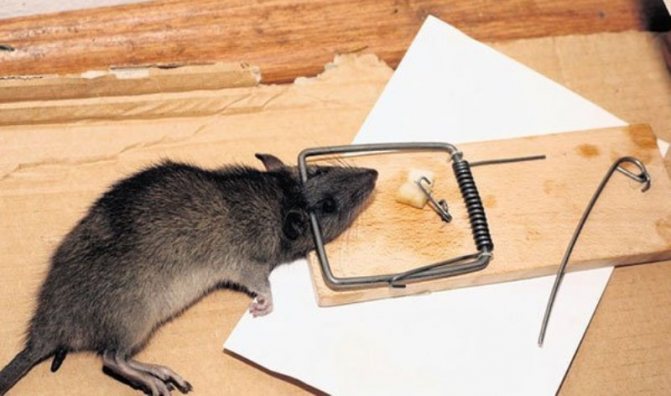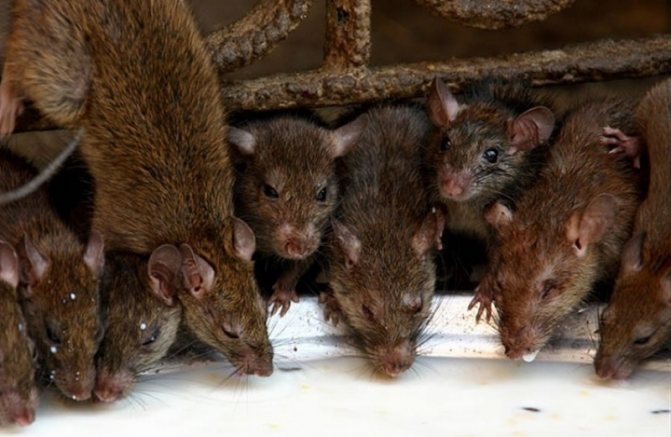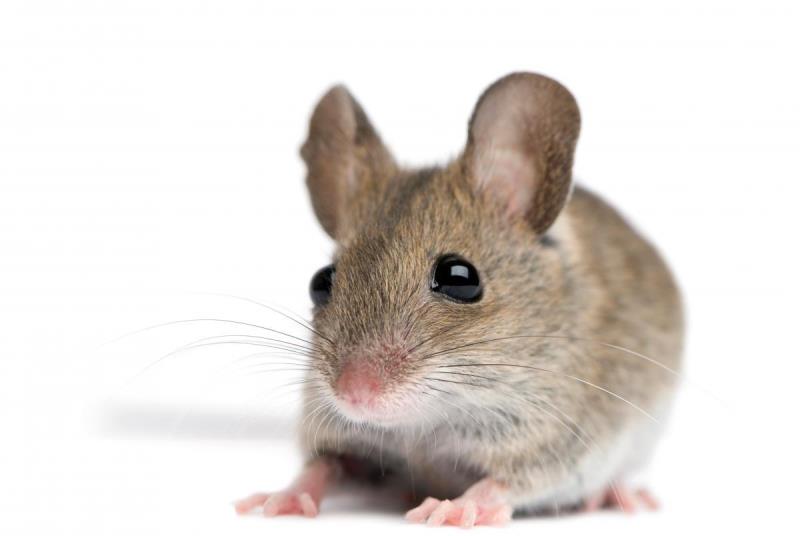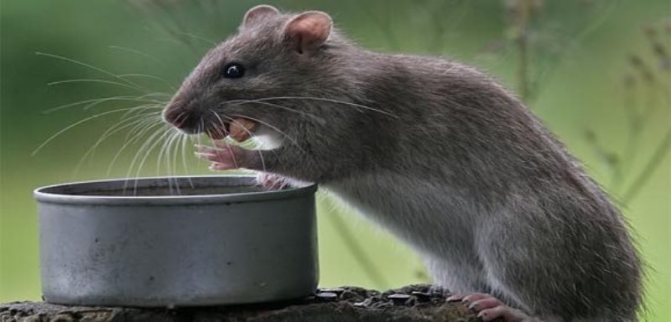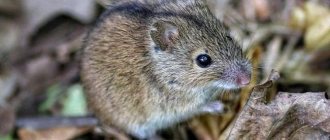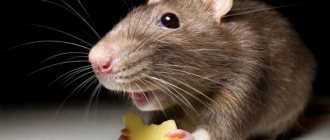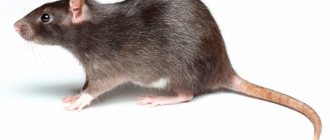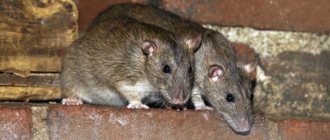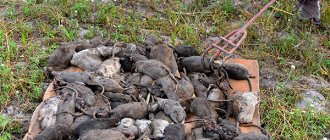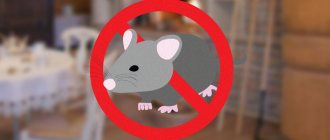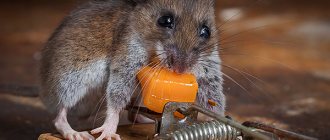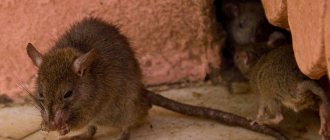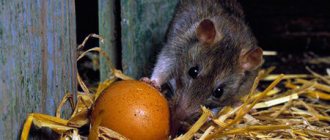External differences
The main signs of difference between rats and mice can be observed in external characteristics. First of all, they are clearly visible in the mass of animals, as well as in the structure of the body. Based on them, you can easily determine which member of the rodent family is in front of you.
Dimensions (edit)
The biggest difference between rodents is in size. Rats have a much larger size, stocky body. The length of an adult can reach 30 cm, excluding the tail. At the same time, the weight indicators fluctuate within 600-700 g. The mouse is a more miniature rodent. It rarely grows more than 10 cm in length, and its mass does not exceed 30 g.
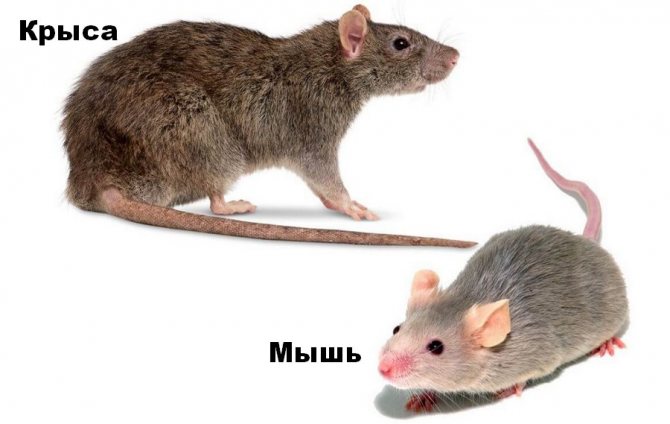
Tail
According to the characteristics of the tail, it is also not difficult to distinguish between animals. In rats, it looks more massive, thicker, has an impressive length, which sometimes is not inferior to the length of the main body, and sometimes even exceeds, reaching up to 35 cm. The tail is bald or bristly, depending on the species. In small rodents, the tail length ranges from 4 to 6 cm, almost throughout it is covered with small hairs.
Also learn what to feed and how to care for a decorative rat.
Head
The shape of the head of a rat and a mouse also has significant differences: the first has a more elongated, pointed muzzle. The organs of vision are poorly developed. Small black or red eyes are deep-set, have a small viewing angle, so the animals have to constantly turn their heads, inspecting the environment. It is interesting that they see it in gray tones, and red objects are transformed into black.
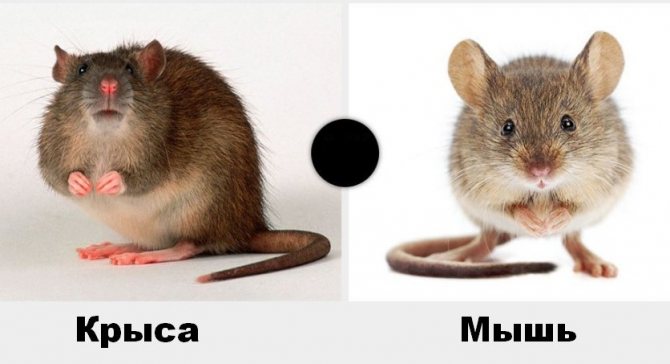

In mice, the shape of the head is more rounded, flattened, and its size is much smaller. But the eyes, in comparison with the size of the muzzle, are large, convex, expressive. The animal has developed hyperopia.
Important! In both rodent species, teeth grow throughout their lives, so they need to be allowed to gnaw on hard objects that can grind off the incisors.
Paws
On the rat's paws, there are practically no calluses, which are necessary for climbing, but there are mobile fingers with sharp claws. Thanks to this property, rodents can move freely through the trees. Sometimes they equip themselves with dwellings in abandoned hollows. Excellent muscularity of the paws allows rodents to jump long distances. Another advantage of the limbs is the presence of membranes between the fingers, outwardly similar to folds of skin.
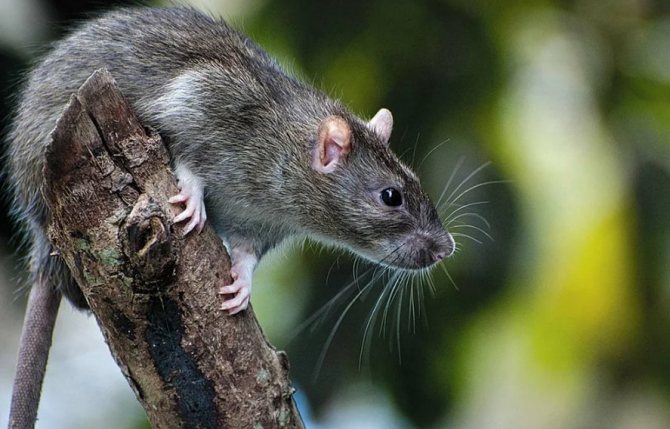

They make excellent swimmers out of rats, capable of foraging in a pond. During movement on a horizontal surface, the paws of the rodents are strongly spread out. If you can see the trail, you will notice that the angle between the outermost phalanges is about 180 °. Since the predator often moves by jumping, the distance between the tracks can also be impressive.
You may find useful information about what types of domestic rodents are.
The legs of the mice are short. Each of them has 5 tenacious fingers, so these small rodents are able to move through the trees. However, their limbs are not as powerful as those of rats. They move mainly with mincing steps, while the toes are minimally spread, and the distance between the tracks is about 1 cm.
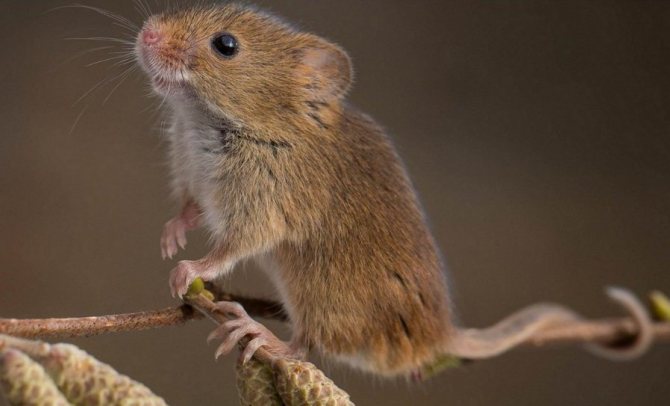

Wool
Mice have a softer, more delicate coat.In nature, its brownish-gray or ash-gray color predominates, but it can vary depending on the habitat. For example, desert mice have a yellow-sandy coat color, and among the decorative species there are white, black, gray-blue, as well as variegated tones.
Did you know? Mice keep their homes clean and tidy, and with droppings they mark routes to food sources.
In rats, the coat is denser, longer and coarser. Gray and dark brown colors are more common. Individuals bred as decorative domesticated animals have many other shades: white, gray, reddish, spotted, etc.
Ears
The ears of the rat are straight, even, pointed towards the top.] Hearing is very well developed - the animal perceives sounds with a frequency of up to 40 kHz, while a person - up to 20 kHz. In mice, this indicator is even higher - animals perceive sounds with a frequency of up to 100 kHz, although the hearing organs themselves are small, rounded, rolled up in a small bag.
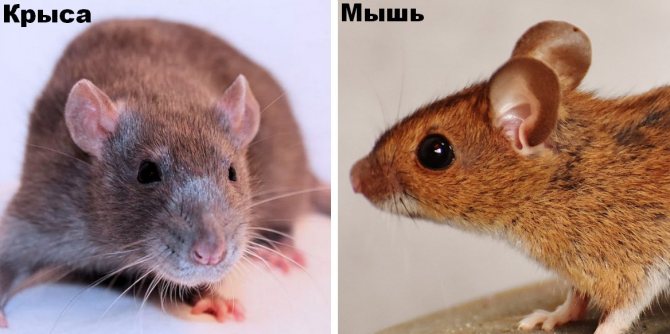

Differences in behavior
Both rodents are capable of causing tremendous harm to humans. Not only do they brazenly eat food supplies, they also bite a lot of things on their way, making not only food, but also household items, things, shoes unusable. They are carriers of serious diseases, dangerous infections for humans. It is difficult to get rid of mice and rats, since both types of rodents are unpretentious, they can live in different conditions - in cold basements, hot boiler rooms, etc.
Did you know? For a long time it was believed that of all creatures on the planet only man can laugh, but American scientists have proved that rats, which also have a sense of humor, have this ability.
The speed that running animals are capable of developing is quite large in relation to their size. Mice move faster, moving at speeds up to 13 km / h. Rats are slightly inferior to them in "sprinting". The maximum speed developed by the gray "robbers" is 10 km / h, but at the same time they are able to jump over obstacles up to 80 cm high and make long-range flight jumps at a distance of up to 1 m. Both mice and rats are able to penetrate into very small holes, hold on well on the water.
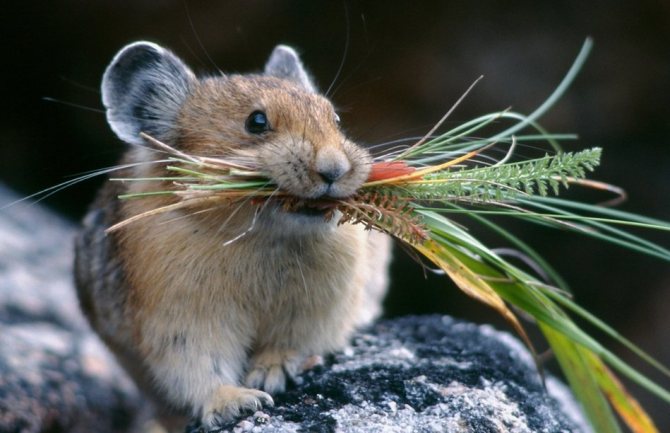

There are some differences in the lifestyle of these two rodent species. In nature, mice keep in colonies with a clearly pronounced hierarchical structure. Nevertheless, they get food one by one, therefore they eat mainly "harmless" food, rarely attacking insects, which they are able to overpower on their own. The animals are rather shy and cautious.
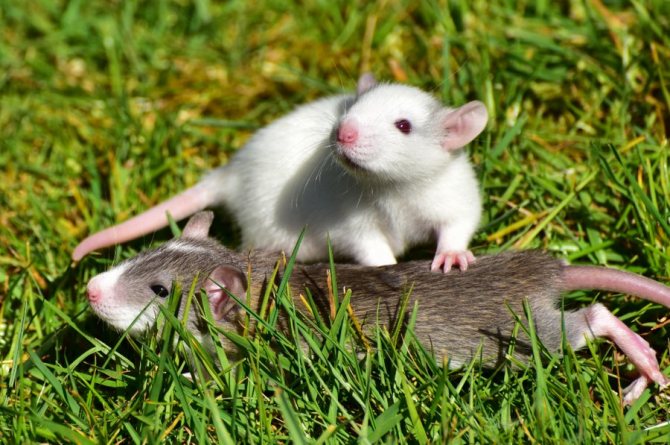

Rats hunt more often in packs, they are characterized by increased aggressiveness. As a group, they may well attack a mammal larger than them. When danger approaches, they show incredible courage, and in self-defense they can even attack a person. The difference also exists in the activity of the animals. Mice sleep much more often, plunging into the "kingdom of Morpheus" about 15 times a day. At the same time, their sleep is short, and each period of activity lasts 30-60 minutes. Rats, as a rule, sleep 1 time per day.
Familiarize yourself with the behavior, care and nutrition of rats at home.
Who is smarter
The rat is one of the most intelligent animals. She has a highly developed intelligence, thanks to which, according to scientists, she is able to analyze information. Animals easily adopt the experience of their ancestors and, as far as possible, do not repeat their mistakes. If a rodent falls into a trap, it will signal the danger to other members of the pack, who will try to leave this area. Rats are trainable, they can be taught to perform a lot of tricks.
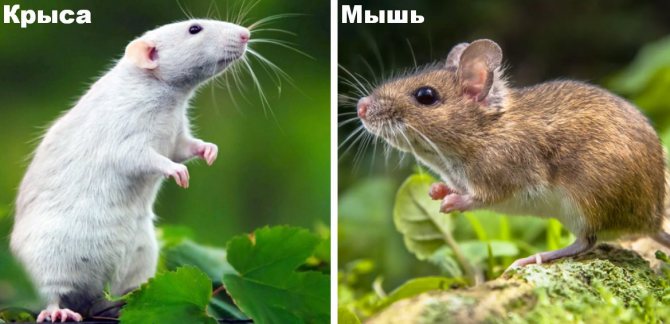

Mice are not inferior to the size of the brain in relation to the body, but in an intellectual fight they will definitely lose to rats. They are extremely difficult to train, although sometimes they get used to their name and respond to it.They memorize routes leading to food sources, are able to stock up based on their instincts. Otherwise, their mental abilities are much weaker.
Intelligence
The mental abilities of these two members of the mouse family are also very different. According to scientists, rats are intellectually developed creatures.
- Firstly, they will not settle in places that are potentially dangerous for them.
- Secondly, they always research the future home and assess the situation.
- Third, they create entire communities with their own hierarchy and laws.
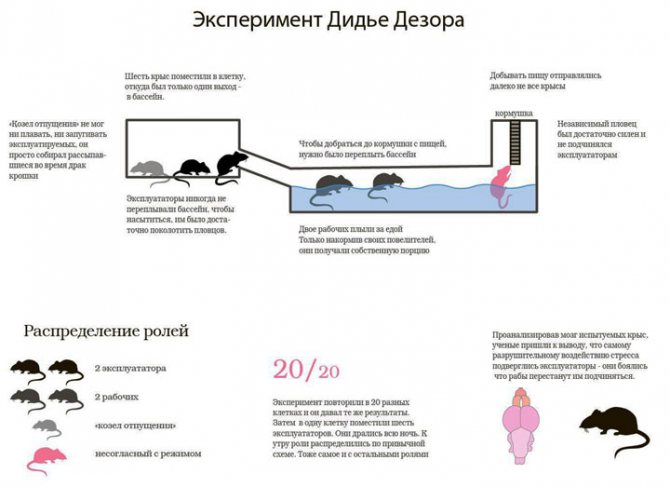

Norushki in this regard are more reckless, therefore, it is much easier to fight them, since you can easily deceive or outwit.
Life expectancy difference
Mice live in the wild and at home are very few - their average life expectancy is 1.5–2 years. Despite this, the colonies of these animals grow rather quickly, since rodents are capable of producing offspring already at the age of 8-9 weeks. In this case, the replenishment in the family can occur up to 10 times a year.
It will be interesting for you to know how many years decorative home mice live.
The lifespan of rats is longer - up to 3 years. They also become "parents" quite early, reproducing up to 12 members of the offspring at a time.
Life cycle
On average, common gray rats live for about 3-5 years. Larger black individuals are 4-6 years old. The life span of mice is 3 years. Both are extremely fertile, and the family is growing by leaps and bounds.
Pregnancy in rats is very fast - about 24 days, and in mice about 18. There are more than 10 individuals in one litter. There can be 7-10 pregnancies per year. So they are gaining numbers with amazing speed, especially in favorable conditions: a good climate and constant access to food.
Differences in nutrition
In the warm spring-summer period in the natural environment, the mouse prefers to feed on plant seeds, cereals. Field animals feast on wheat, buckwheat, oats. Rodents living in forests prefer hazel nuts, acorns, and can even feed on small insects. Near water bodies, they find roots and stems of plants, berries, larvae.
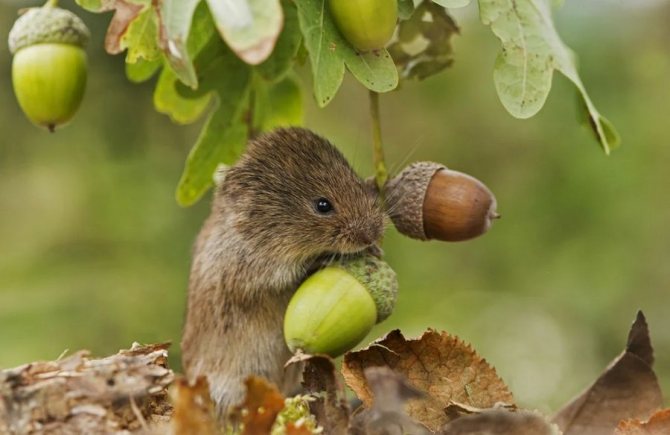

With the advent of autumn cold snaps, the mouse begins to actively search for warm bread places, moving closer to the person. Penetrating into the home, it becomes omnivorous. In addition to any edible food, she does not disdain such means as soap or candles. Animals are especially harmful to the stocks of vegetables stored in the basement, cereals in bags, they can chew on wires, and settle down shelves with linen and clothes.
Important! Ornamental rodents should not be given raw meat, bacon and smoked meats.
The rats are even more troublesome. These rodents are capable of damaging everything in their path, including wires and structures. Everything that a person eats is great for them. Under natural conditions, rats need food with a high protein content, feeding on fish, amphibians, insectivores. By nature, they are predators, they destroy the nests of birds, they can devour small rodents, including mice.
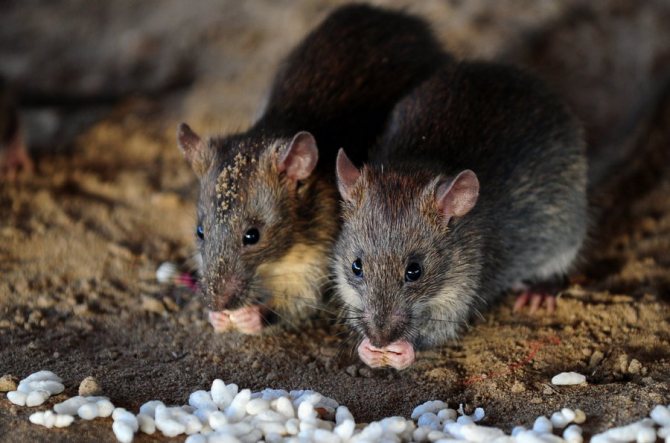

At home, a large rodent eats any food and waste, does not hesitate to feed intended for livestock and poultry. The rat does not make supplies, but without food it dies rather quickly, after 3-4 days. Her diet must necessarily contain water or food containing a lot of moisture. Without receiving it, the rats die within a few days. As for domesticated ornamental rodent species, it is recommended to feed them with grain fodder and vegetables. Protein food is served in the form of boiled chicken meat, egg white, cottage cheese.
Read on for how to properly bathe your rat at home.
Mouse poop
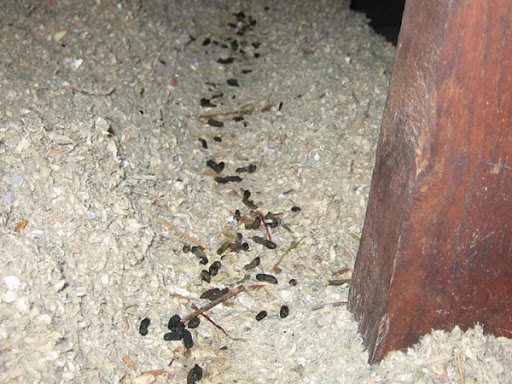

They are quite small, like black grains of rice. Mice leave up to 80 pieces of excrement per day. The droppings of these rodents are from 1 to 5 mm in size.Pellets with pointed ends, black when fresh. After a short period of time, they acquire a grayish or brown color. The excrement usually dries up within 24 hours and becomes very hard. The detection of such "seeds" is a signal to start the fight against rodents. The condition of the excrement can be used to determine how long mice have been in your home.
Usually these rodents prefer to move along the walls. Therefore, it is there that the largest amount of excrement is found.
What do newborn rats and mice look like?
Like all cubs, rats and mice have an attractive, funny look. Watching these harmless little lumps is one emotion. At first glance, they seem to be very similar, but upon closer examination, significant differences in appearance are clearly visible. First of all, you need to know that a newborn rat has a body length of about 3 cm, while he is completely naked, without signs of hair. A mouse that has reached this length already has a magnificent fur coat.
Differences, which are mostly similar to those that are present in adults:
- the body of the mouse is more rounded. The animal prefers to sit huddled up in a ball. In rat pups, the body is more elongated, and they often like to rest stretched out, like cats;
- the tail of a large rodent is more powerful, occupies about 80% of the body length, and in a small rodent it is thin, barely more than 50%;
- in the rat, the shape of the muzzle is pointed, oblong. The organs of hearing have the same features. In mice, the head is shorter and rounder, the ears are thin, rounded.
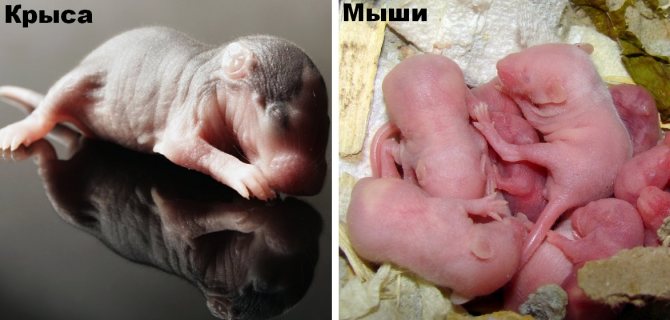

In what ways are pathogens transmitted?
Even if a person has never been bitten by a mouse, this does not mean that he is outside the risk zone. The variety of ways mice can transmit disease is truly amazing.
You can get infected in the following ways:
- eat food or water contaminated with the faeces of a sick animal;
- inhale dust with wool and droppings;
- by direct contact with a decomposing rodent corpse;
- immediately after the bite.
You can even get infected from your pet.
Some viruses are carried by ticks and fleas that suck blood from an infected mouse. Also, a cat that has eaten an infected rodent can become a carrier of the disease itself.

